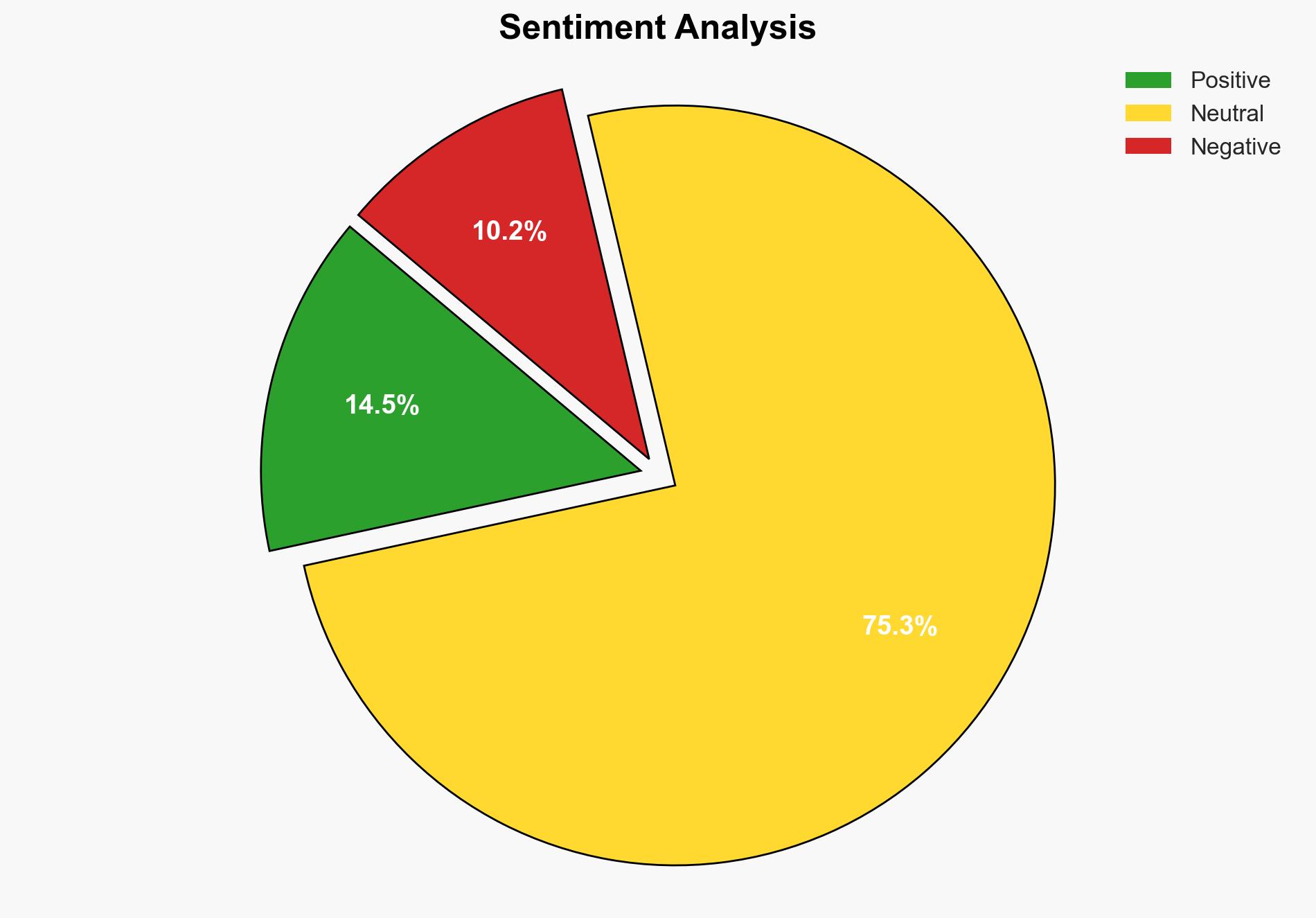Iran Has Long Lagged Behind Neighbors In Joint Fighter Jet Production – Forbes
Published on: 2025-03-01
Intelligence Report: Iran Has Long Lagged Behind Neighbors In Joint Fighter Jet Production – Forbes
1. BLUF (Bottom Line Up Front)
Iran remains significantly behind its regional neighbors in the joint production of modern combat aircraft. While countries like India and Pakistan have made strides in developing and producing advanced fighter jets through international collaborations, Iran’s efforts have been limited to upgrading older models. This lag poses strategic challenges for Iran’s defense capabilities and regional influence.
2. Detailed Analysis
The following structured analytic techniques have been applied for this analysis:
SWOT Analysis
- Strengths: Iran has a substantial domestic arms industry capable of producing certain military hardware.
- Weaknesses: Limited technological advancement in fighter jet production compared to regional peers.
- Opportunities: Potential collaborations with countries interested in Iran’s strategic location and resources.
- Threats: Increased regional isolation and potential for technological obsolescence in military capabilities.
Cross-Impact Matrix
The development of advanced fighter jets in neighboring countries like India and Pakistan could lead to a shift in regional power dynamics, potentially increasing pressure on Iran to modernize its military capabilities. This may influence Iran’s foreign policy and defense strategies.
Scenario Generation
- Best-Case Scenario: Iran successfully engages in international collaborations to enhance its fighter jet production capabilities, improving its regional standing.
- Worst-Case Scenario: Continued isolation leads to further technological lag, weakening Iran’s defense posture.
- Most Likely Scenario: Incremental improvements in domestic production without significant breakthroughs in joint production efforts.
3. Implications and Strategic Risks
Iran’s lag in fighter jet production poses risks to its national security and regional influence. The growing capabilities of neighboring countries could lead to a strategic imbalance, potentially affecting regional stability. Economic interests may also be impacted if Iran fails to modernize its military industry.
4. Recommendations and Outlook
Recommendations:
- Iran should seek strategic partnerships with technologically advanced nations to enhance its fighter jet production capabilities.
- Invest in research and development to innovate and upgrade existing military technologies.
- Consider regulatory and organizational reforms to facilitate international collaborations and technology transfers.
Outlook:
In the best-case scenario, Iran could leverage international partnerships to modernize its military capabilities. However, without significant changes, the most likely outcome is a continued lag behind regional peers, with potential negative implications for national security and regional influence.
5. Key Individuals and Entities
The report mentions significant individuals and organizations such as India, Pakistan, Russia, and China, but does not provide any roles or affiliations. These entities play a crucial role in the regional dynamics of military technology development.




